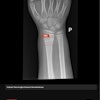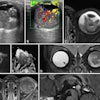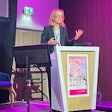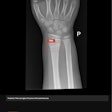
NEW YORK (Reuters Health), Aug 18 - Although studies suggest that off-pump coronary artery bypass graft (CABG) surgery is better than on-pump, a study from Portugal showed that off-pump patients had higher rates of early graft occlusion.
In a randomized trial, the researchers analyzed graft patency in 75 patients who had multivessel CABG without cardiopulmonary bypass and in 75 others who did have bypass. Secondary outcomes included 30-day complication rates, neuropsychological functioning, and one-year clinical and functional outcomes. Patient characteristics were similar between the groups, and patients in each group received a mean of 3.5 grafts.
Dr. Miguel Sousa Uva, of Hospital da Cruz Vermelha Portuguesa in Lisbon and colleagues reported online July 1 in the European Heart Journal that at five weeks after surgery, multidetector computed tomography showed raw graft patency rates of 90% in the off-pump group versus 95% in the on-pump group (odds ratio 0.46; p = 0.03).
Ten percent of grafts were occluded in the off-pump group, versus 5% in the on-pump group. The differences were no longer significant after adjustment for total heparin dose.
Overall, 26.7% of patients in the off-pump group and 12.9% in the on-pump group (p = 0.04) had at least one occluded graft. The mean proportion of patent grafts per patient was 0.91 and 0.96 in the off-pump and on-pump groups, respectively (p = 0.06). For these outcomes as well, the difference was no longer significant after adjusting for the total heparin dose.
There were no significant differences between the groups in adverse events at 30 days or in neuropsychological functioning at five weeks. Both groups declined from baseline on measures of attention, memory, and psychomotor speed.
At one year, patients in both groups showed similar functional class and similar treadmill exercise test results.
"Although it was not the purpose of the present study, the antithrombotic protocol (< 300 U/kg of heparin), still used by a majority of off-pump surgeons, may have been responsible for the higher likelihood of graft thrombosis in the off-pump group," the authors suggest.
The difference might also be related to use of saphenous vein and radial artery grafts versus internal mammary grafts, they said.
"Since these are hypothesis-generating analyses, studies of alternative antithrombotic strategies for off-pump CABG are needed, including the use of double-antiplatelet therapy," the researchers add.
SOURCE: link.reuters.com/fak55n
Eur Heart J 2010.
Last Updated: 2010-08-17 10:16:30 -0400 (Reuters Health)
Copyright © 2010 Reuters Limited. All rights reserved. Republication or redistribution of Reuters content, including by framing or similar means, is expressly prohibited without the prior written consent of Reuters. Reuters shall not be liable for any errors or delays in the content, or for any actions taken in reliance thereon. Reuters and the Reuters sphere logo are registered trademarks and trademarks of the Reuters group of companies around the world.


















